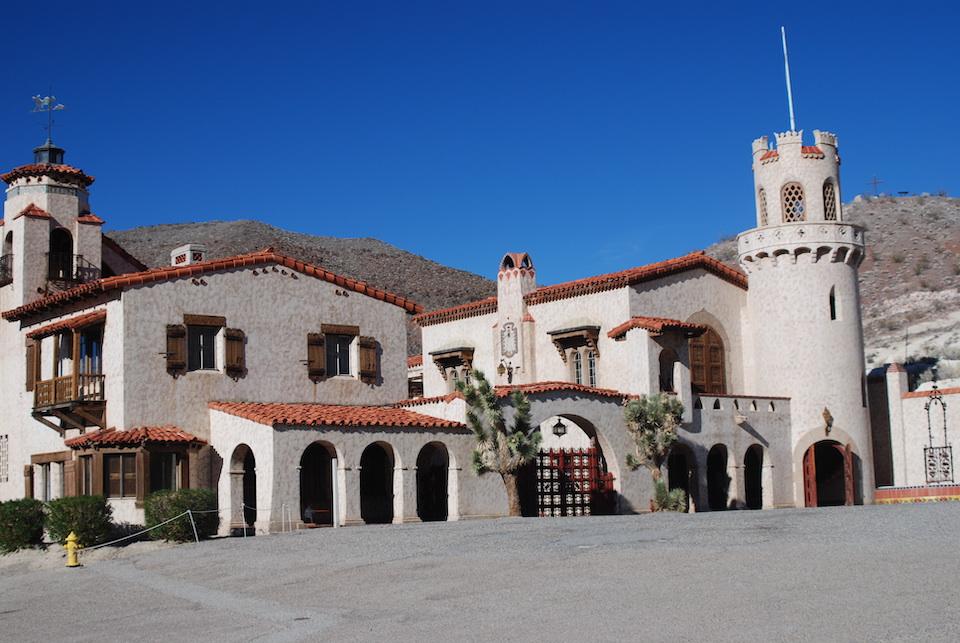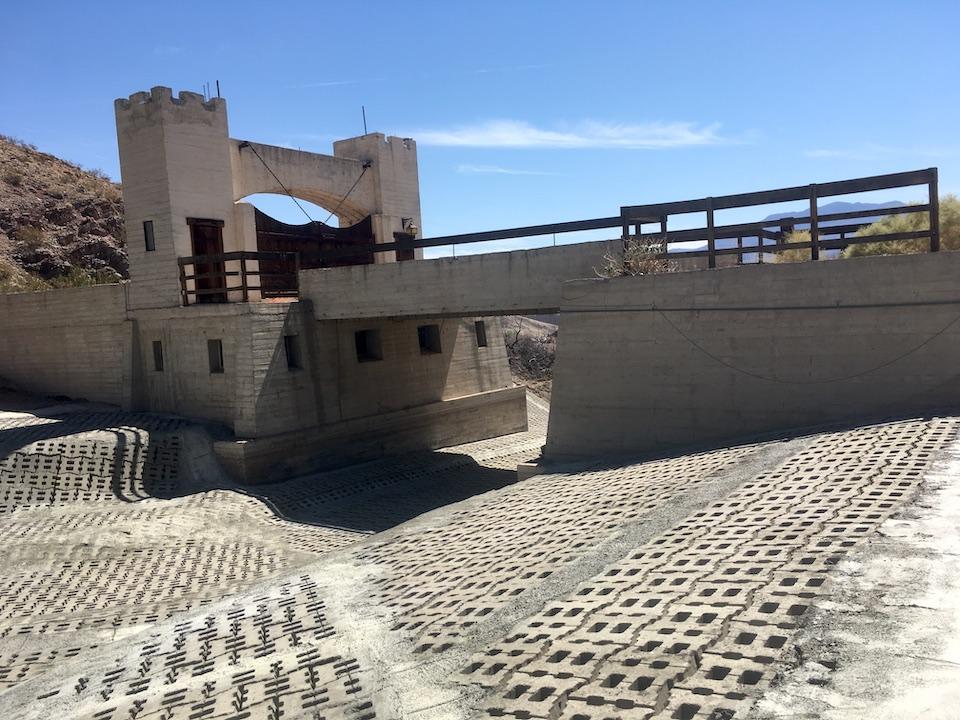
It is expected to be another two years before Scotty's Castle, pictured here pre-2015 storm, is ready to welcome back tours/Kurt Repanshek file
It was five years ago, on October 18, 2015, that a storm of historic dimensions pounded Death Valley National Park and sent torrents down through Grapevine Canyon that uprooted utilities, swept away sections of roads, and flooded buildings at Scotty's Castle. While much has been done to repair the damage, it's expected to take until the end of 2022 to have the iconic park destination ready to welcome the public back for regular tours of the grounds and castle.
The storm dumped nearly 3 inches of rain on the castle and the surrounding landscape over a five-hour period, according to the U.S. Geological Survey. Weather radar suggested 3-4 inches of precipitation elsewhere in the lower part of the drainage basin during the same event, which the National Weather Service estimated to be a “1,000-year rainfall event.”
While repair work continues, the Death Valley Natural History Association will offer a limited number of tours this winter to see Scotty’s Castle, learn about the flood, and explain the recovery effort. Once the schedule is finalized, information will be posted at dvnha.org.

Substantial work went into stabilizing the entrance bridge at the castle/NPS
According to Death Valley officials, here's a glance at the status of fully repairing the damage to the castle and surrounding infrastructrue:
- Scotty’s Castle Road – completed January 2020. The road is remaining closed until other projects are completed for visitor safety and protection of historic district.
- Water – The water main replaced in 2019/2020. Distribution lines to be replaced in 2021.
- Wastewater – Sewage treatment was replaced in 2019/2020. Collection lines will be replaced in 2021.
- Electrical – Southern California Edison installed the powerline in 2016. Electrical distribution in the campus was repaired in 2019/2020. Further work is planned for 2021.
- Visitor center – The historic garage is now used as the visitor center. It was the most heavily damaged building, with extensive structural damage. The construction contract will begin next month and should be completed by November 2021. The adjoining historic Long Shed, which is used for back-of-the house support for the visitor center, is just entering design phase, with construction likely in 2022.
- Hacienda – The historic building is used for staff housing and offices. This building had interior damage from mud and water. Construction will start next month and be completed by November 2021.
- Flood control structures – This project will build a 600-foot-long gabion-lined berm and four smaller flood walls and ditches. Design has been completed recently and consultation with the California State Historic Preservation Office will start soon. Construction is tentatively planned for July 2021-July 2022.
- Heating, ventilation, and air conditioning (HVAC) – This project will construct a climate control plant with a boiler, chiller, and cooling tower. The design was completed recently and consultation with the California State Historic Preservation Office will start soon. Construction is tentatively planned for September 2021-September 2022.
- Historic furnishings – The furniture, dishes, carpets, and clothing that belonged to Scotty and the Johnsons were moved off-site for protection. The Death Valley Natural History Association funded about $100,000 in conservation work on the pipe organ, curtains, and silver. The museum collection will be returned to the Castle for the public to enjoy after all the other projects are complete.
Scotty’s Castle was constructed in the 1920s as a vacation home for Albert and Bessie Johnson, millionaires from Chicago. The (untrue) claim that it was built on top of Walter “Scotty” Scott’s gold mine fueled public interest at the time, and still does.
Not only is this Spanish-influenced mansion seemingly out of place in the high desert, but its design pushed the technological limits of the 1920s. Not only did Albert Johnson see that there was a solar heating system at work, but he also had a Pelton water wheel turbine installed to generate electricity for the place. Too, an evaporative cooling system employed indoor waterfalls and even wet burlap to keep things inside the castle relatively cool on those 100-plus-degree summer days.



Comments
My first trip to Scotty's council was in January 1956. I have been visiting the valley ever since usually 2 to 3 times a year when I lived in Southern California. It is without a doubt one of my most favorite places! I was so sad when I found out in November 2016 about the devastation from the floods of October 2015. I look forward to the time when we can once again visit the castle. It's been very interesting since 1956 as different organizations some religious groups etc. were in charge of the castle and to hear the different historic stories that each group came up with. Thank you to everyone who is working so hard to bring the castle back to its original glory. Hopefully many generations will come, but they enjoy and learn about this very unique structure in the middle of the desert. Death Valley has so many attractions and beautiful scenery throughout the valley And every visit brings me a great deal of joy. I look forward to many more trips!